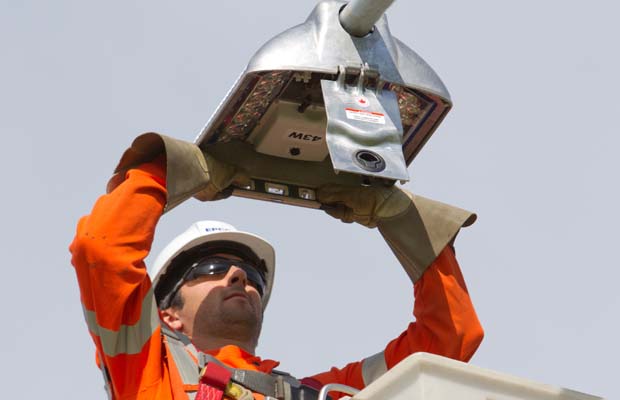
Edmonton, Canada - Edmonton could save $50 million over two decades by speeding up the conversion of street lights to LED fixtures from conventional equipment, a new report says.
The city began a 20-year program in 2011 to install LED bulbs in all 100,000 street lights, a move expected to cut the power they use by one-third and reduce the city’s greenhouse gas emissions by six per cent, but completing the work in five years would eliminate an additional 130,000 tonnes of greenhouse gases, as well as reducing spending on electricity and maintenance, it says. While the conversion would cost about $60 million, that money would be paid back from lower expenses within 13 to 17 years.
"Based on the initial review, it is anticipated that over the 20-year lifespan of the equipment the city would see a net savings of approximately $50 million after the paydown of the capital costs."
The report recommends looking at carrying out the program with an energy service company, which would finance the work and then be reimbursed by the city from a portion of the savings. Any money saved after the costs are paid would be shared by the city and the company.
The proposal will be discussed by council’s transportation committee.
Transportation general manager Bob Boutilier said the potential savings surprised him when they were examined last year. "That one was absolutely amazing. We went through and had everybody analyze it from the standpoint that it can’t be true," he said. "The energy saving is phenomenal."
Edmonton is one of the Canadian leaders in this area. Mississauga, Ont. is aiming to switch its lights to LED over three years and the Nova Scotia government banned non-LED street lights in 2011.
Coun. Don Iveson called the move "kind of a no-brainer," and said Edmonton’s conversion has been well-received in areas where it has occurred. "There’s less glare off some of these lights than our current sodium fixtures … They use less power and waste less light that goes into people’s windows at night and can distract people when they’re driving."
The extra reduction in greenhouse gases from making the change more quickly would equal the city’s total emissions for almost six months, he said. "It helps us get down the road further to the 50 per cent reduction (target) on greenhouse gases by 2020."
Iveson is also willing to consider hiring a private company to handle the project. "There’s some opportunity to transfer some risk around the cost of power and the cost of technology and maintenance by working with a partner."





 CN
TW
EN
CN
TW
EN






